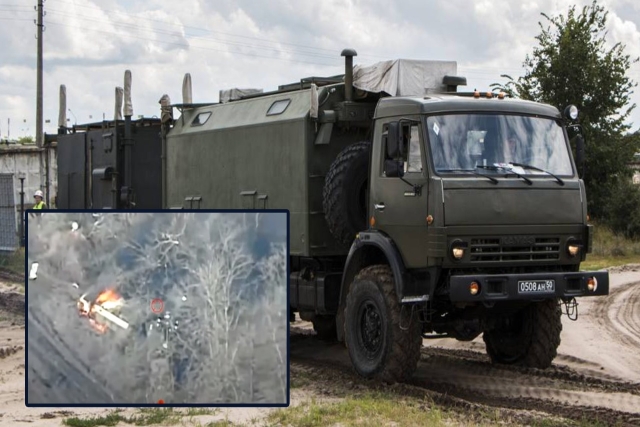Russian Jammers a ‘Threat’ to U.S.-made Guided Weapons: British Experts

Russian electronic warfare (EW) may be having a ‘negative effect’ on U.S.-made Joint Direct Attack Munitions (JDAMs), alleged leaked U.S. documents show.
UK’s Royal United Services Institute (RUSI) that had access to the documents noted in a report that improved Russian jamming skills are taking a toll on JDAM’s accuracy, despite the weapon having received multiple anti-jamming upgrades.
“The documents articulated U.S. concerns that Russian jamming was causing some JDAM-ER munitions to miss their targets,” RUSI said. “Jamming is not causing JDAMs to stop working, but it is risking their accuracy – arguably a key selling point of the weapon.”
The U.S. rolled out Selective Availability Anti-Spoofing Module (SASSM) upgrade across the JDAM fleet to mitigate jamming risks. This included the addition of guidance kits using M-Code GPS transmissions. M-Code is the encrypted military GPS signal.
Russia’s investment in counter-GPS technologies is part of a massive EW campaign aimed at disrupting Ukrainian radio communications and drones.

RUSI states that Moscow has now employed approximately one major EW system per 10km (6.2 miles) of frontage. Such extended coverage has reportedly contributed to a Ukrainian drone loss rate of 10,000 per month.
These EW systems are drowning out GPS guidance signals from satellites, affecting the trajectory of smart weapons, the report claims. The jamming could also be affecting the performance of the U.S.-supplied HIMARS.
“The problem may well be the sheer power of the jamming signal that can be brought to bear,” RUSI researcher Thomas Withington said.
Withington explained that the Russian troops operate a truck-mounted jamming system named ‘R-330Zh Zhitel’ against GPS and satellite signals with 100 MHz to 2 GHz wavebands. The system can transmit jamming signals with 10 kW of power.
“Signals from the U.S. GPS satellites which JDAM kits use are transmitted on wavebands from 1.164 GHz to 1.575 GHz,” he said, indicating that the weapon falls within the jammer’s catchment area.
He further stated that the Zhitel’s range has been increased to 29.9km (18.6 miles), with a 10-kilowatt jamming signal.













